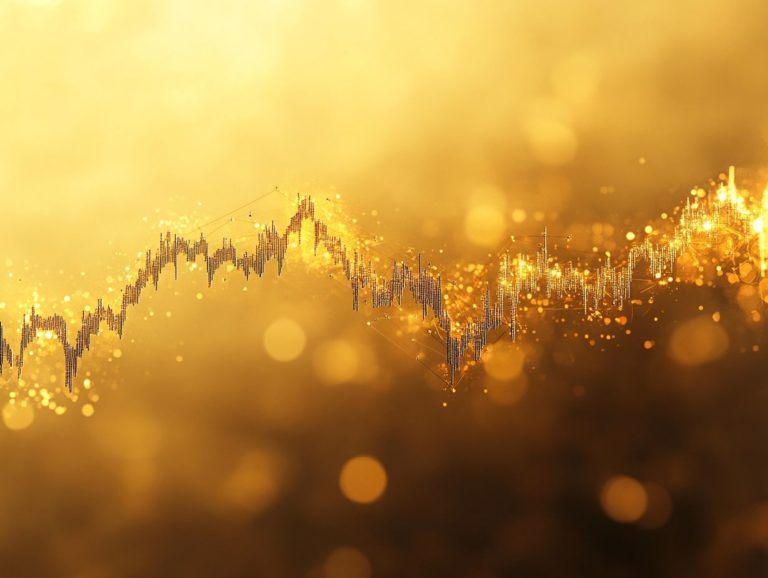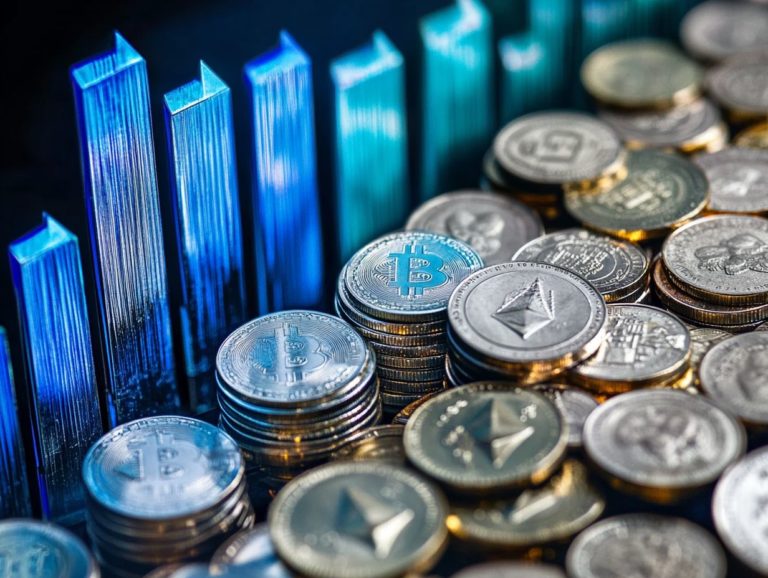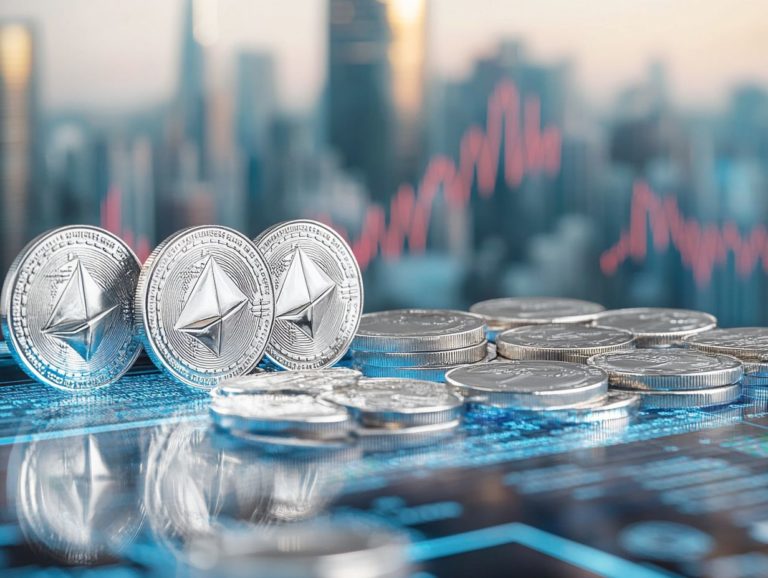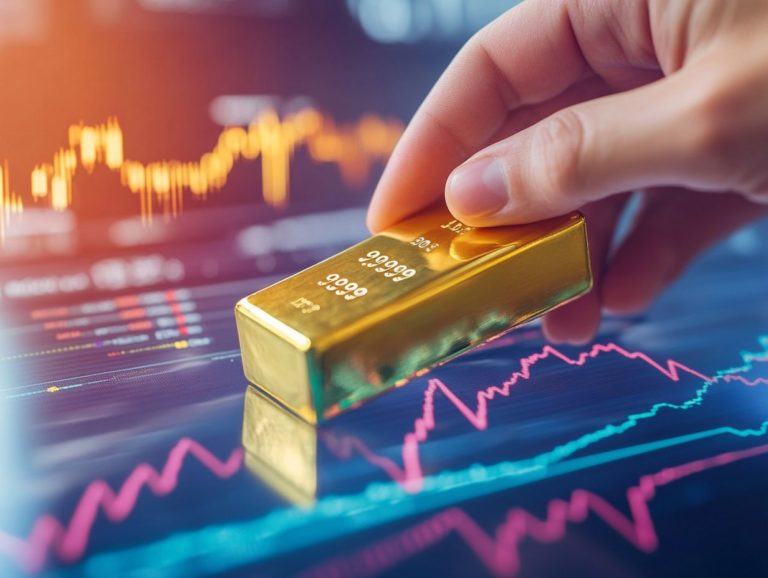Key Drivers of Platinum Prices in 2024
Platinum, a rare and valuable precious metal, holds considerable importance across various industries, from automotive to jewelry.
For you as an investor or industry stakeholder, understanding the factors that influence its prices is crucial. Let s explore the dynamics of supply and demand, global politics, and the metal’s industrial applications.
It also highlights the benefits and risks associated with investing in platinum, offers forecasts for 2024, and provides strategies to adeptly navigate price volatility.
Dive in to uncover the key drivers that are shaping the future of platinum.
Contents
- Key Takeaways:
- Explanation of Platinum as a Precious Metal
- Factors Affecting Platinum Prices
- Industrial Uses of Platinum
- Investing in Platinum
- Predictions for Platinum Prices in 2024
- Strategies for Managing Platinum Price Volatility
- Frequently Asked Questions
- What are the main factors that will impact platinum prices in 2024?
- How does supply and demand affect platinum prices?
- Will economic growth have an impact on platinum prices in 2024?
- What role do investment trends play in platinum prices?
- How do geopolitical events impact platinum prices?
- What other factors could affect platinum prices in 2024?
Key Takeaways:
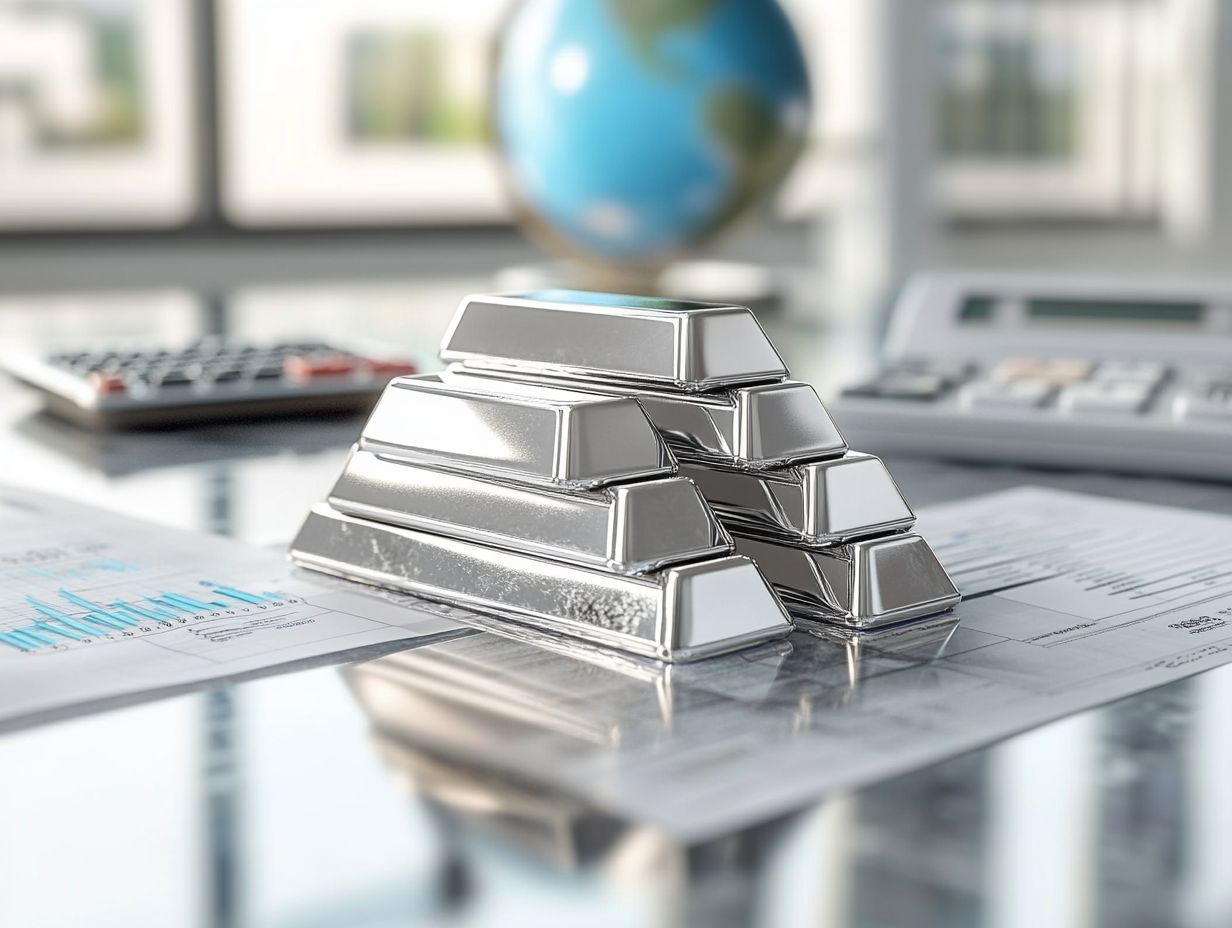
- Platinum is a precious metal with various industrial uses, making it susceptible to supply and demand dynamics and global politics.
- Investing in platinum has its benefits but also carries risks, such as price volatility. It is important to understand and manage these risks through hedging and diversification techniques.
- Expert opinions and market trends suggest that platinum prices will continue to be influenced by global economic conditions in 2024. Keeping an eye on these factors can help inform investment strategies.
Explanation of Platinum as a Precious Metal
Platinum is a rare and highly sought-after precious metal, renowned for its exceptional qualities that make it critical across various industries. In the automotive sector, for instance, it s a key player in catalytic converters and is gaining traction in fuel cell electric vehicles (FCEVs) as the world pivots towards sustainable energy solutions amid the growing demand for electric vehicles and a hydrogen economy.
Its impressive resistance to corrosion and heat elevates its desirability even further, enabling it to thrive in harsh environments. But platinum isn t just making waves in the automotive arena; it also holds a significant place in the jewelry industry, where its lustrous sheen and durability captivate discerning consumers.
In healthcare, platinum compounds are utilized in chemotherapy drugs, underscoring its important role in healthcare. Given its limited natural reserves and relatively modest annual production compared to other precious metals like gold and silver, the global demand for this unique metal continues to surge.
This makes platinum an intriguing asset for you as an investor, worthy of consideration in a diversified portfolio.
Factors Affecting Platinum Prices
The prices of platinum are shaped by a complex mix of factors. You ll find that supply and demand dynamics play a crucial role, alongside global politics stemming from major producing regions like South Africa and Russia.
The rising interest in platinum investment products is also noteworthy, especially as global market trends increasingly lean towards sustainable alternatives in sectors like automotive and industrial applications.
Supply and Demand Dynamics
Understanding the supply and demand dynamics of platinum is essential for grasping its market behavior. Mine supply largely originates from regions like South Africa and Russia, while demand spans a diverse range of sectors, including automotive, industrial applications, and the emerging markets for recycling and investment products.
This intricate web of interactions is notably influenced by the automotive sector, where the demand for catalytic converters a crucial component in reducing vehicle emissions remains robust, especially as stringent environmental regulations continue to expand globally.
The medical industry also significantly contributes to the demand, utilizing platinum in treatments and diagnostic procedures, which adds another layer of complexity to the overall landscape. Recycling efforts are gaining traction as producers aim to enhance sustainability and decrease reliance on primary mining.
Recent data highlights these trends, indicating a shifting balance towards maximizing existing resources while addressing the growing needs across various sectors.
Geopolitical Influences
Geopolitical factors shape the platinum market significantly. South Africa and Russia dominate platinum production.
Political stability, environmental regulations, and trade policies in these regions can drastically affect mine supply. This, in turn, influences global platinum prices.
These factors create a complex web of interdependencies. They can lead to fluctuations in availability and cost. For instance, local politics in South Africa can heavily impact labor relations. Meanwhile, Russia’s standing on the international stage can dictate the flow of exports.
Stringent environmental regulations may either bolster the industry’s sustainability efforts or drive up operational costs. Both of these play crucial roles in price dynamics.
International trade agreements also add complexity to the market. Changes in tariffs or trade restrictions can set off ripple effects, altering the global supply chain and ultimately impacting the price of platinum.
Industrial Uses of Platinum
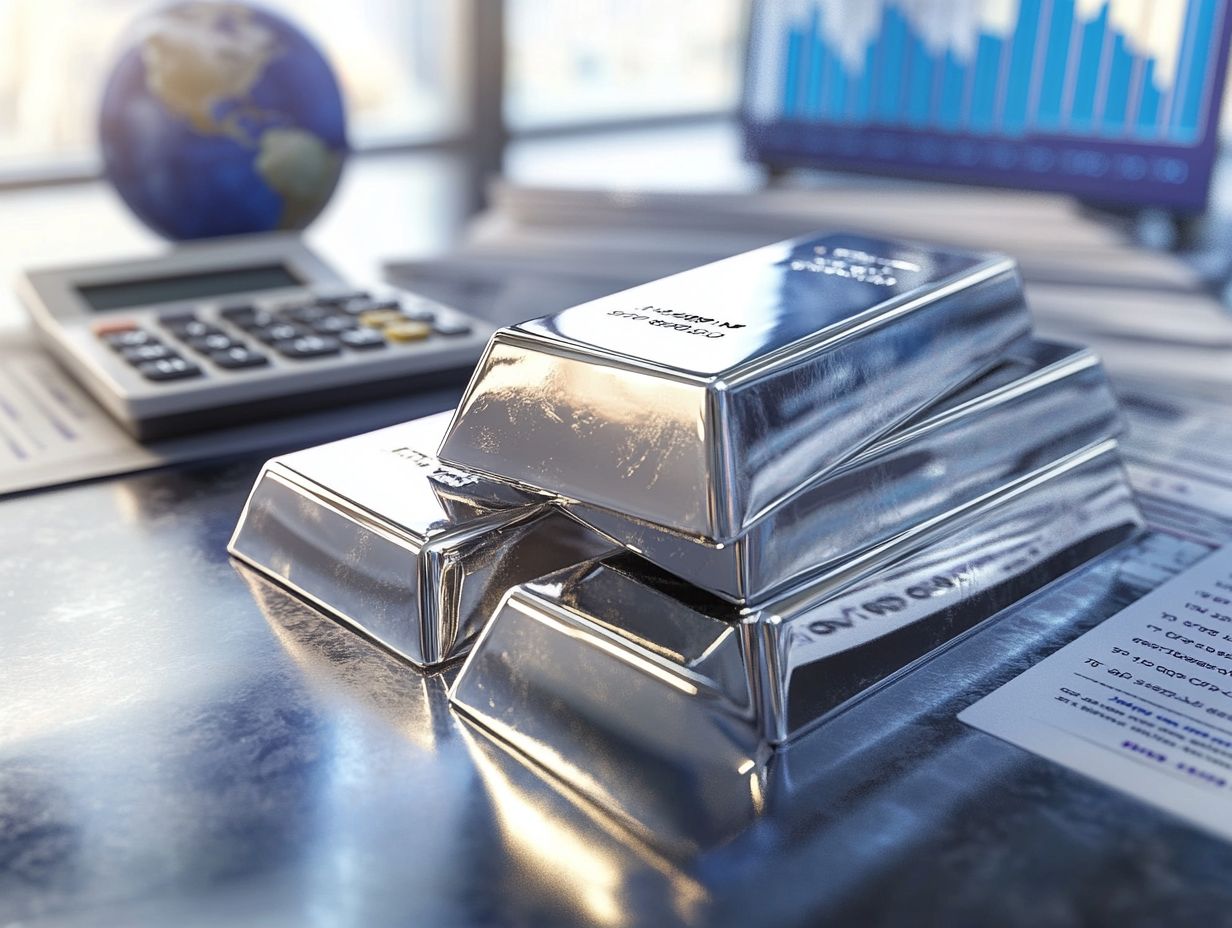
Platinum’s remarkable versatility makes it critical across various industrial applications, especially in the automotive sector. Here, it plays a vital role in devices that reduce harmful emissions in vehicles, known as catalytic converters, and in fuel cell technologies.
Its significance doesn t stop there. Platinum also finds applications in medical treatments, highlighting its multifaceted value. From enhancing vehicle efficiency to powering sophisticated medical machinery, platinum showcases diverse contributions across various fields.
Key Industries and Applications
Key industries tapping into platinum’s potential include the automotive sector, where it plays an essential role in catalytic converters and fuel cells. The medical field employs platinum for a variety of treatments, highlighting not only the metal’s broad application potential but also its significance in the emerging hydrogen economy.
In the automotive industry, advancements in fuel cell technology are transforming the landscape. These innovations enable vehicles to operate on hydrogen and dramatically cut emissions. As manufacturers invest in these technologies, platinum stands out as a key player due to its exceptional effectiveness as a catalyst in electrochemical reactions.
This transition represents a significant milestone for environmentally friendly transportation and paves the way for further exploration within renewable energy sectors.
The medical field continues to lead in discovering new applications for platinum in targeted therapies and implants. This underscores the metal’s versatility and its critical role in enhancing both technological progress and health advancements.
Investing in Platinum
Many investors are turning to platinum to diversify their portfolios. Platinum ETFs have emerged as a convenient option alongside traditional methods, such as investing in physical platinum.
Don’t miss out on the growing interest in platinum, fueled by its industrial significance and potential for price jumps.
Benefits and Risks of Investing in Platinum
Investing in platinum brings a distinctive blend of benefits and risks. On one hand, it serves as a hedge against inflation and currency fluctuations. On the other hand, it carries the weight of market volatility, geopolitical instability, and demand shifts driven by industrial uses and evolving market trends.
The allure of platinum often captivates investors due to its rarity and exceptional qualities. This makes it critical in sectors like automotive, healthcare, and electronics. For example, the surging demand for platinum in catalytic converters highlights how environmental regulations can spark investment interest, especially as nations strive to cut emissions. To explore the investment potential of platinum in 2024, it’s essential to consider these trends.
However, investors should remain cautious. Unexpected geopolitical tensions or changes in manufacturing can trigger abrupt price declines, keeping investors on edge. Recent market data reveals that while platinum has bounced back from previous lows, its performance is closely linked to trends in renewable energy investments.
This underscores its dual nature as both a stable investment and a volatile asset shaped by global dynamics.
Predictions for Platinum Prices in 2024
As you look ahead to 2024, consider how predictions for platinum prices are influenced by shifting market trends.
Increased demand from electric vehicles and geopolitical developments shape a complex environment for investors.
Expert Opinions and Market Trends
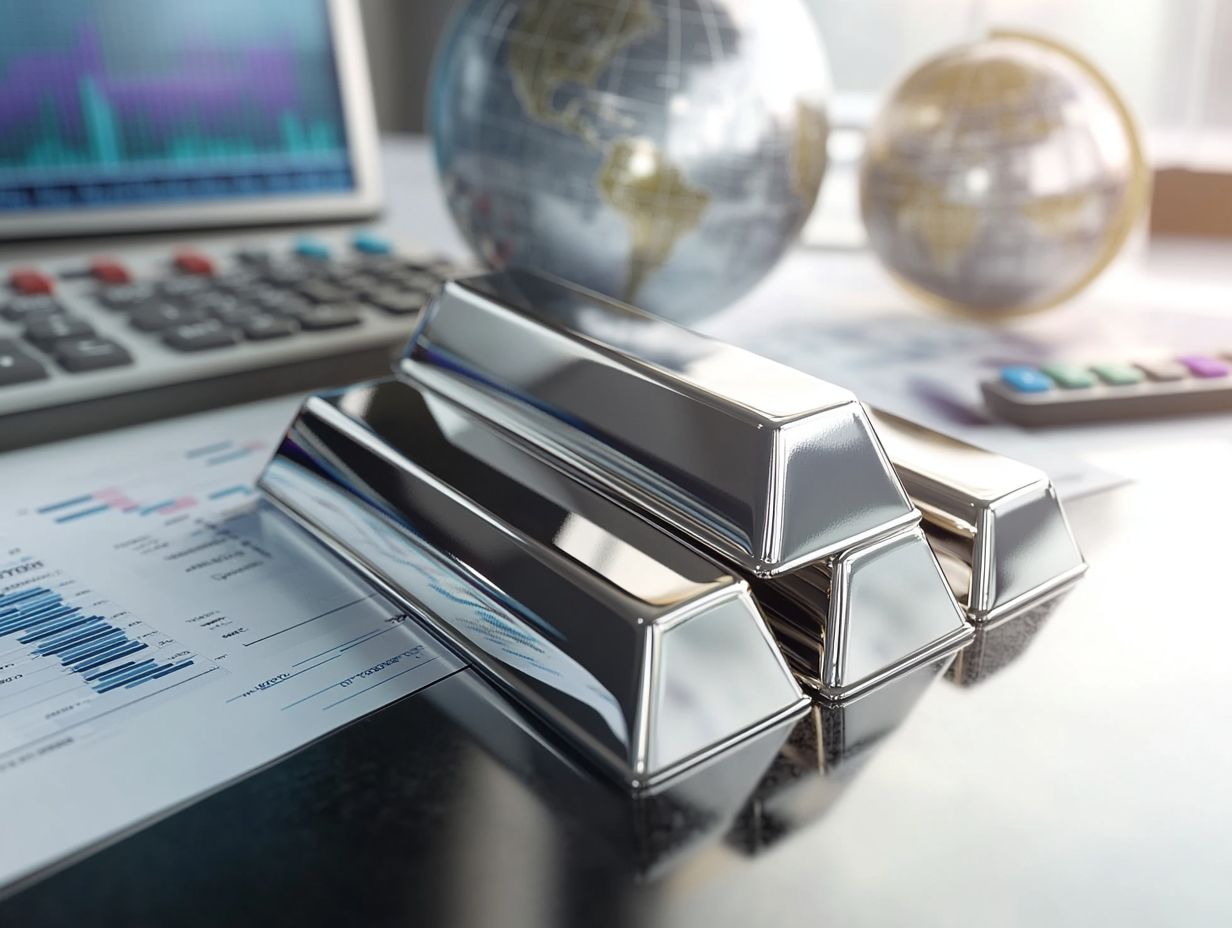
Experts agree that significant fluctuations may occur due to market trends and technological advancements.
As governments emphasize clean energy, industry leaders see platinum playing a vital role!
The rise of green technologies highlights platinum’s critical role in our energy future. Analysts believe advancements in hydrogen production and fuel cells could lead to greater utilization of platinum.
By understanding these dynamics and keeping a keen eye on geopolitical events, you can tailor your investment strategies to seize emerging opportunities.
Strategies for Managing Platinum Price Volatility
Managing platinum price volatility requires adopting strategic approaches like hedging and diversification.
These strategies help protect your investments from price fluctuations and market volatility while also allowing you to capitalize on emerging trends!
Hedging and Diversification Techniques
Hedging and diversification techniques are essential for every platinum investor. They offer protection against price fluctuations.
These strategies may involve options contracts, futures, and exchange-traded funds (ETFs) focusing on precious metals.
By utilizing put options, you can shield your holdings against downward price movements.
Incorporating assets from various sectors linked to platinum can bolster your portfolio’s resilience during economic downturns.
Geographic diversification is another tactic to consider, spreading your investments across different markets to buffer against localized economic shifts.
Ultimately, these strategies empower you to seize profitable opportunities while maintaining a strong foundation during unpredictable market conditions.
Frequently Asked Questions
What are the main factors that will impact platinum prices in 2024?
The key drivers of platinum prices in 2024 include supply and demand, economic growth, investment trends, and geopolitical events.
How does supply and demand affect platinum prices?
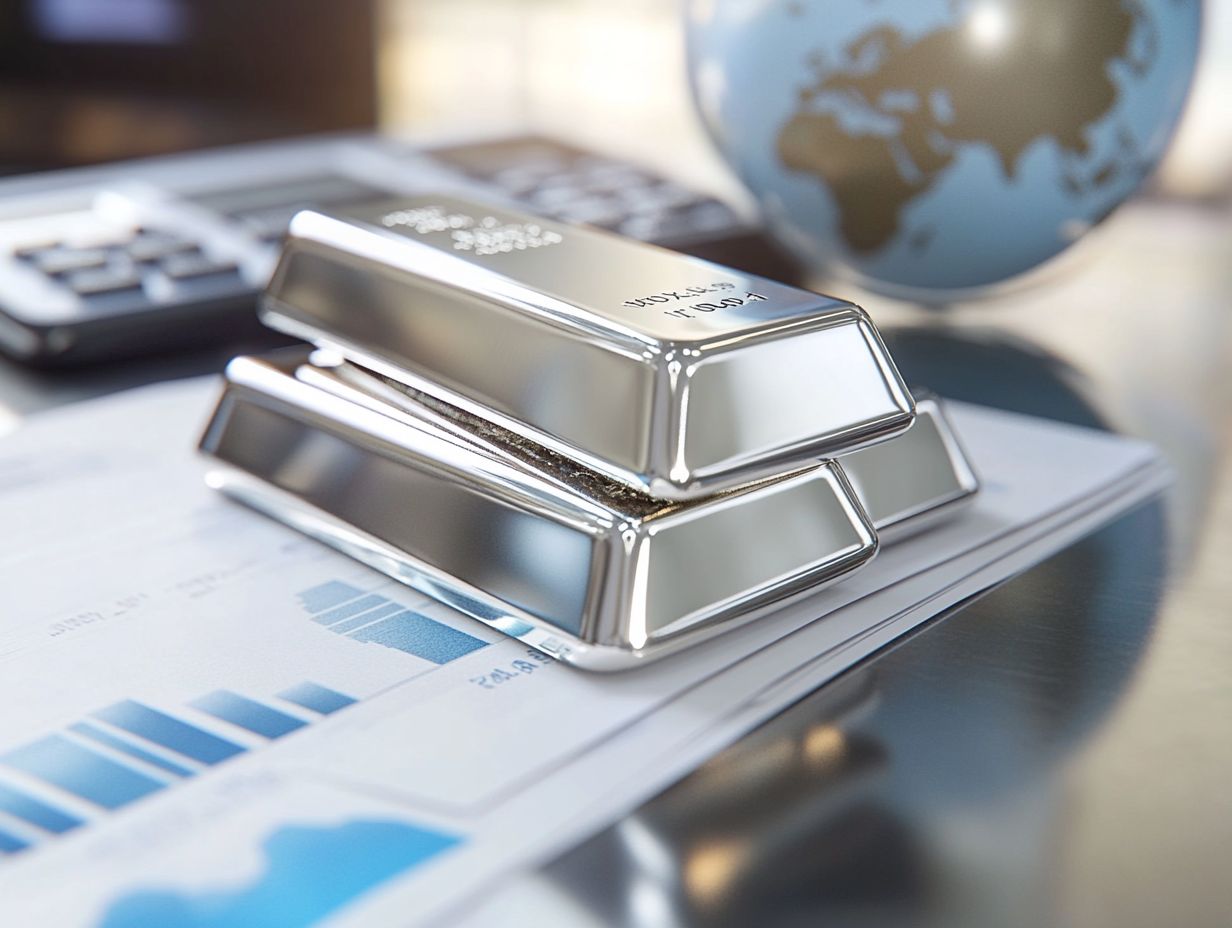
Platinum is a finite resource, and its scarcity can cause prices to rise. Changes in demand from industries such as automotive and jewelry can also impact prices.
Will economic growth have an impact on platinum prices in 2024?
Yes, economic growth is closely linked to platinum prices. As economies grow, demand for platinum in industrial applications increases, which can drive prices higher.
What role do investment trends play in platinum prices?
Investment trends, such as the buying and selling of platinum futures contracts, can significantly impact prices. Speculative buying and selling can cause volatility in the market.
How do geopolitical events impact platinum prices?
Yes, political instability or conflicts in major platinum-producing countries can disrupt supply and cause prices to rise. Changes in government policies or regulations can also impact prices.
What other factors could affect platinum prices in 2024?
In 2024, several factors may affect platinum prices.
These include changes in technology, environmental rules, and shifts in currency values, which refer to changes in the value of money used in different countries.










